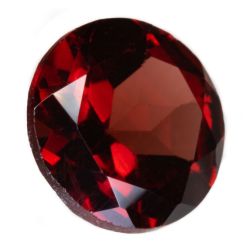Pearl Wisdom

Pearls. Idealized as perfectly round white orbs shimmering with a faint pink light, or black ones glistening with iridescent purple.
They were probably first discovered by ancient peoples diving or searching shorelines for food. We know that Romans and Egyptians were adorning themselves with pearls at least as far back as the 5th Century BC, and mentions of their use in China are even earlier.
Did you know that the 16th Century in England was known as the Pearl Age? During this era of exploration and plunder, nearly 4,500 pounds of pearls were transported back to England, most of them found in (and stolen from) the Aztec temples of the New World.
There are so many different kinds of pearls. There are saltwater pearls that grow inside mollusks like clams and snails, and freshwater pearls that grow inside mussels. Natural pearls grow naturally without human intervention, and cultured pearls are cultivated on vast pearl farms.
Yes, pearl farms. In Japan in the late 1800s, Kokichi Mikimoto began experimenting with cultivating pearls. He had been fascinated watching pearl divers in Ise Bay as a child, and eventually became obsessed with developing the perfect pearl. He obtained a loan to start a pearl farm in 1888, and he nearly bankrupted himself several times trying to get the process right. At the same time - unbeknownst to Mikimoto and also in Japan — a government biologist named Tokichi Nishikawa, and a carpenter named Tatsuhei Mise (working independently, also unaware of each other!) were also experimenting with pearl formation. Nishikawa and Mise eventually joined forces and filed a patent together for the grafting method most cultivated pearl technicians still use today. Mikimoto then took their patent a step further to create Akoya pearls that were perfectly round, and he filed a patent on top of the Mise-Nishikawa patent for this development.
Until that time, pearls were incredibly expensive because they were incredibly rare. Once they could be cultivated, pearls became accessible to the average woman. It’s no wonder they became one of the most coveted items in a woman’s jewel box from the 1920s through the 1960s.
Within the categories of fresh, salt, natural, and cultivated there are so many different types of pearls.
Photo Courtesy Grace Pearl and GIA
Saltwater Pearls
Saltwater pearls tend to be more expensive than freshwater pearls, largely because they are more consistent in shape than their freshwater counterparts.
Akoya pearls are the longest-known and most coveted saltwater pearls. They are perfectly round and have a rich, deep, shimmering nacre. Their natural colors range from white to light pink to pale yellow, and you can also find them with green, blue, or gray tones. These are the pearls that Kokichi Mikimoto found a way to cultivate, making them more accessible to generations of pearl-loving women.
South Sea pearls are larger than Akoyas, and the majority of them you will find for sale are cultured (truthfully, the majority of all pearls sold today - saltwater and freshwater - are cultured). South Sea Pearls typically present as a very white - almost silver - color, or slightly hued with either gold or pink. Because they can grow in very limited conditions and also take longer to grow than Akoyas, they tend to be more expensive.
When most people think of Tahitian pearls, they think “black pearls.” But some of my favorite Tahitian pearls are very deep shades of brown, purple, blue, green, and gray.
 Photo Credit: GIA
Photo Credit: GIA
Freshwater Pearls
As mentioned earlier, saltwater pearls are more consistent in their shape than freshwater pearls. But irregularity is something a lot of women actually love in a pearl! Freshwater pearls come in a crazy range of colors, and all kinds of different shapes. They can also be super tiny, like rice pearls, or quite large (12mm and even larger!).
Yes, freshwater pearls can be round, but only about 2% of all freshwater pearls are round or near-round. Most of them are irregular, baroque, or semi-baroque shapes. What’s that you say? Baroque simply means irregularly shaped! But there are a lot of different shapes within that definition. There are potato baroque pearls that are small, squarish, and lumpy in nature; coin pearls that are flat and round; teardrop baroque pearls are highly valued and used extensively in Victorian jewelry and findings for clothing.
All keshi pearls are baroque pearls - and they can be either saltwater or freshwater. They are something that can only happen as a result of the pearl culturing process — formed when the host spits out the implanted nucleus of the pearl before it is done forming, or when the implanted tissue fractures and forms separate pearl sacs. Since they are formed without a nucleus, they are 100% nacre, which gives them even greater lustre than even the most expensive and high-quality cultured pearls.
One of the things I love most about pearls is their versatility. Like a little black dress, every woman should have at least one strand (better yet, two, one white and one black) of traditional pearls, perfect for wearing to dressy or more formal occasions. But why stop there? It’s so much fun to layer long, ropy strands of pearls in many colors. Ombre pearl strands are also exciting, as are unusually shaped baroque pearls worn singly, as a pendant.
Pearls have been the subject of great paintings and poetry. They have a history as illustrious - and sometimes infamous - as gold and diamonds. And they should be part of your story too, in whatever shape, size, and color delights you the most.









